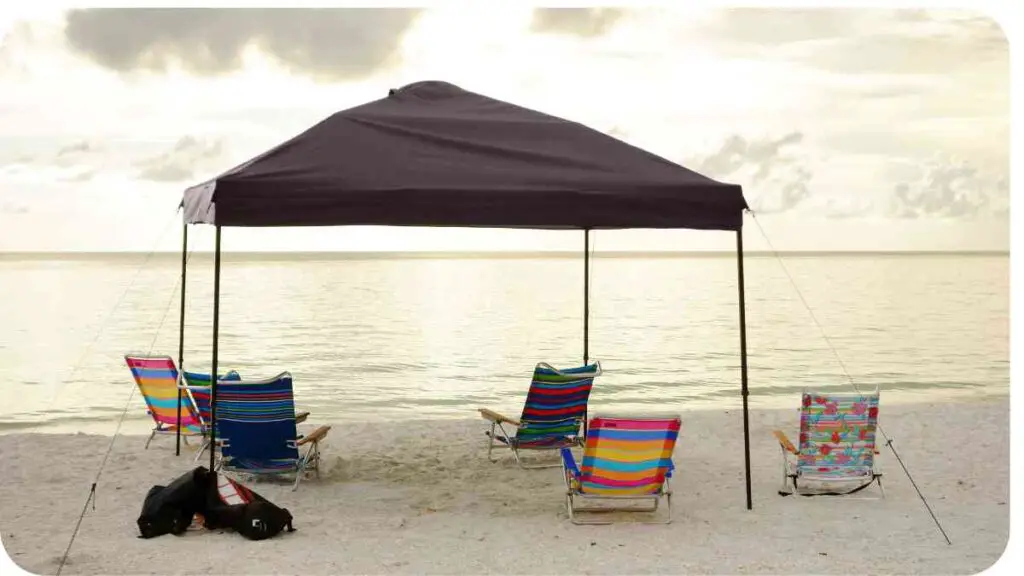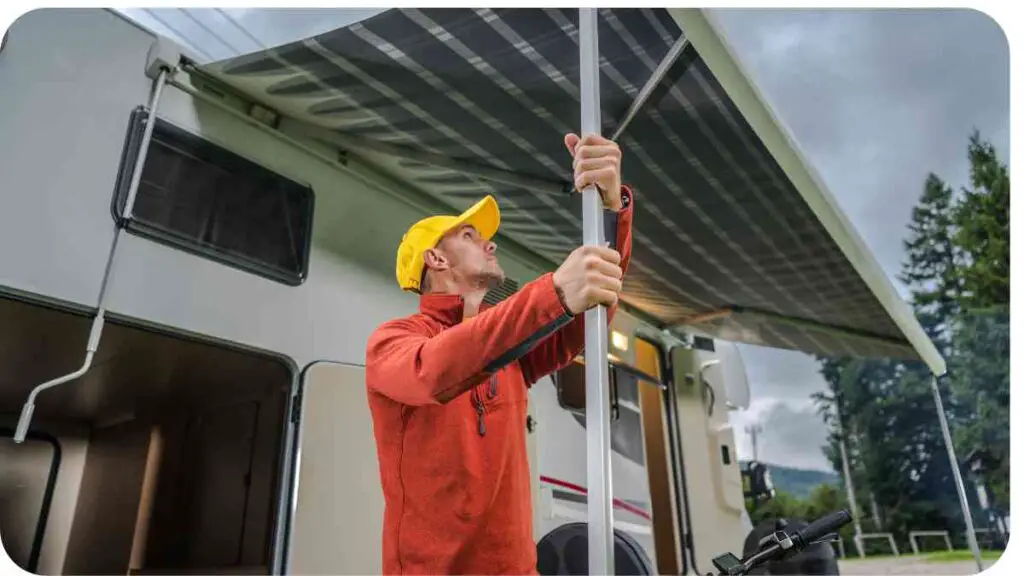Setting up a canopy outdoors can transform any space into a comfortable shelter, whether it’s for events, camping, or simply enjoying your backyard. However, when the time comes to take it down and store it away, proper techniques are crucial to ensure its longevity. In this guide, we’ll explore effective canopy takedown tips and how to store your outdoor shelter safely to protect your investment for years to come.
| Key Takeaways |
|---|
| Proper storage is essential for canopy longevity. |
| Regular cleaning helps prevent damage and stains. |
| Choose the right storage option based on space and protection needs. |
| Inspect your canopy before and after storage for any issues. |
| Following manufacturer’s instructions for disassembly and storage is crucial. |
2. Why Proper Canopy Storage Matters

Proper storage of your canopy is essential for maintaining its quality and prolonging its lifespan. Leaving your canopy exposed to the elements or storing it incorrectly can lead to damage such as mold, mildew, or fabric deterioration. Let’s delve into why storing your canopy correctly matters:
Table: Comparison of Canopy Storage Options
| Storage Option | Pros | Cons |
|---|---|---|
| Indoors | Provides maximum protection | Requires ample indoor space |
| Garage or Shed | Offers protection from elements | Limited space may be an issue |
| Canopy Storage Bag | Convenient and portable | May not offer full protection |
| Covered Outdoor Area | Easy access, some protection | Still exposed to weather elements |
3. Assessing Your Canopy
Before storing your canopy, it’s essential to assess its condition to address any issues and ensure proper storage.
Inspect the canopy fabric for any tears, mold, or mildew. Check the frame for damages or bent parts that may need repair. Addressing these issues before storage will prevent them from worsening over time.
4. Cleaning Your Canopy

Proper cleaning is crucial before storage to prevent dirt, stains, and mildew from setting in and causing damage. Here’s how to clean your canopy:
- Remove Debris: Shake off any dirt, leaves, or debris from the canopy fabric.
- Spot Cleaning: Use a mild detergent, water, and a soft brush to spot clean any stains.
- Rinse Thoroughly: Rinse the canopy thoroughly with water and allow it to dry completely before storage.
5. Disassembly Tips
Taking down your canopy correctly is just as important as setting it up properly. Follow these tips for disassembly:
- Work Methodically: Start by removing any accessories or sidewalls from the canopy.
- Enlist Help: If your canopy is large or heavy, have someone assist you to prevent damage.
- Follow Instructions: Refer to the manufacturer’s instructions for disassembly to avoid any mistakes.
6. Folding Techniques
Proper folding ensures your canopy fits neatly into storage and reduces the risk of damage. Here’s how to fold your canopy:
- Collapse Frame: Collapse the frame according to the manufacturer’s instructions.
- Fold Fabric Neatly: Fold the fabric carefully to avoid wrinkles or creases.
- Avoid Sharp Folds: Try to avoid sharp folds that could weaken the fabric over time.
7. Storage Options
Choosing the right storage option for your canopy is crucial to protect it from damage while not in use. Let’s compare different storage options:
Table: Comparison of Canopy Storage Options
| Storage Option | Pros | Cons |
|---|---|---|
| Indoors | Provides maximum protection | Requires ample indoor space |
| Garage or Shed | Offers protection from elements | Limited space may be an issue |
| Canopy Storage Bag | Convenient and portable | May not offer full protection |
| Covered Outdoor Area | Easy access, some protection | Still exposed to weather elements |
Indoors: Storing your canopy indoors, such as in a basement or spare room, provides the maximum protection from the elements. However, it requires sufficient indoor space.- Garage or Shed: Keeping your canopy in a garage or shed offers protection from weather elements like sun and rain but may be limited by space constraints.
- Canopy Storage Bag: A storage bag designed for canopies is convenient and portable, but it may not offer full protection against moisture or pests.
- Covered Outdoor Area: Storing your canopy under a covered outdoor area provides easy access while offering some protection, but it’s still exposed to weather elements like wind and dust.
8. Tips for Long-Term Storage
If you’re storing your canopy for an extended period, consider these tips:
- Use Covers: Invest in canopy covers to provide an extra layer of protection.
- Elevate Off the Ground: Store your canopy off the ground to prevent moisture damage.
- Regular Checks: Periodically check your stored canopy for any signs of damage or pests.
9. Common Mistakes to Avoid
Avoid these common mistakes when storing your canopy:
- Storing When Wet: Never store your canopy when it’s wet, as it can lead to mold and mildew growth.
- Ignoring Damage: Address any damages or tears before storing to prevent them from worsening.
- Not Cleaning Properly: Improper cleaning before storage can result in stains and odors.
10. Extending the Lifespan of Your Canopy

Taking proper care of your canopy not only ensures its longevity but also saves you money in the long run. Here’s how to extend its lifespan:
- Proper Cleaning: Clean your canopy regularly to prevent dirt buildup.
- Storage Maintenance: Check your storage area regularly for any signs of damage or pests.
- Avoid Overexposure: Limit prolonged exposure to sunlight and harsh weather conditions.
11. Conclusion
Properly storing your canopy is essential for maintaining its quality and extending its lifespan. By following the tips outlined in this guide, you can ensure your outdoor shelter remains in top condition for years to come.
Remember to assess your canopy, clean it thoroughly, use proper disassembly techniques, and choose the right storage option based on your space and needs. With careful attention to storage, you’ll enjoy many more outdoor adventures with your canopy.
Whether it’s for backyard gatherings, camping trips, or events, your canopy will be ready to provide shelter whenever you need it.
Further Reading
Here are some additional resources for further reading on canopy care and maintenance:
- How to Take Down a Canopy Tent: This comprehensive guide provides step-by-step instructions on properly disassembling your canopy tent.
- Keep Your Tent Looking Brand New This Summer Season: Learn valuable tips and tricks for maintaining the appearance and functionality of your canopy tent throughout the summer months.
- How to Put Up a Canopy Tent: This guide offers insights into efficiently setting up your canopy tent, ensuring a hassle-free outdoor experience.
FAQs
How do I properly clean my canopy?
Spot clean any stains with mild detergent and water, then rinse thoroughly and allow it to dry completely before storage.
Can I leave my canopy outside during the winter?
It’s not recommended. Extreme weather conditions can damage your canopy. It’s best to store it properly during the off-season.
How often should I inspect my stored canopy?
It’s advisable to inspect your stored canopy periodically, especially before and after each use, to ensure it’s in good condition.
What should I do if I notice mold or mildew on my canopy?
Clean the affected area with a mixture of water and mild detergent, then allow it to dry completely in the sun. Consider using a mold and mildew cleaner for stubborn stains.
Is it safe to fold my canopy when it’s wet?
No, it’s not safe. Folding a wet canopy can promote mold and mildew growth. Always ensure it’s completely dry before storage.

I am Hellen James, a professional handywoman with expertise in improving home and garden spaces by using pergolas, gazebos, and tents.


